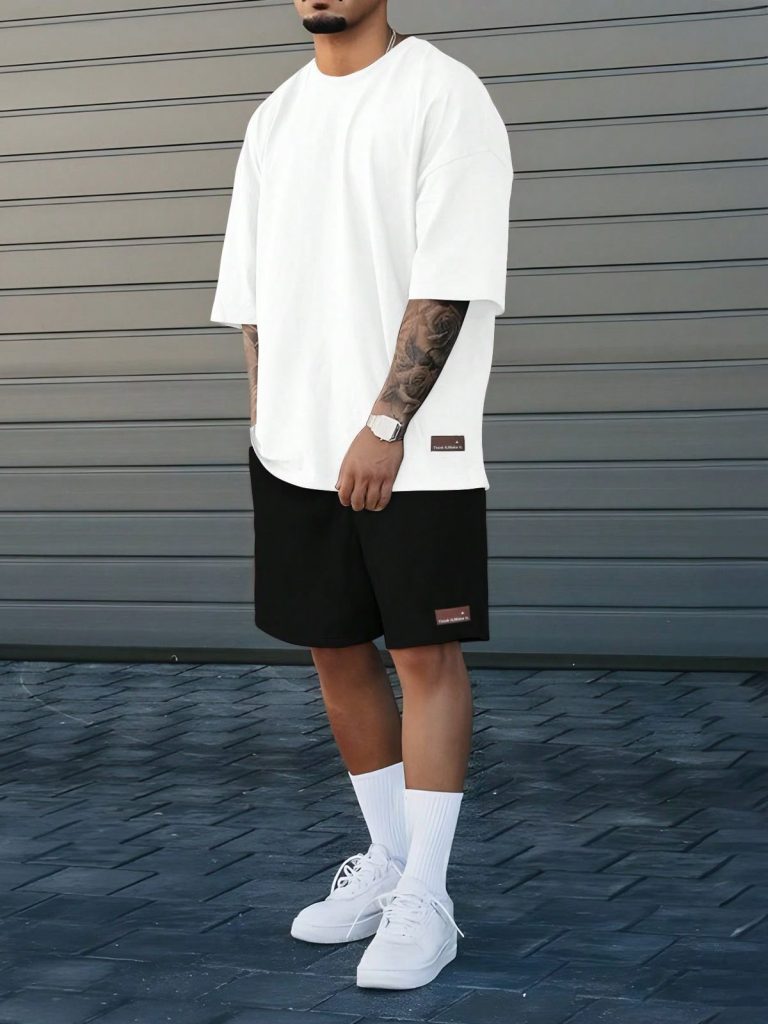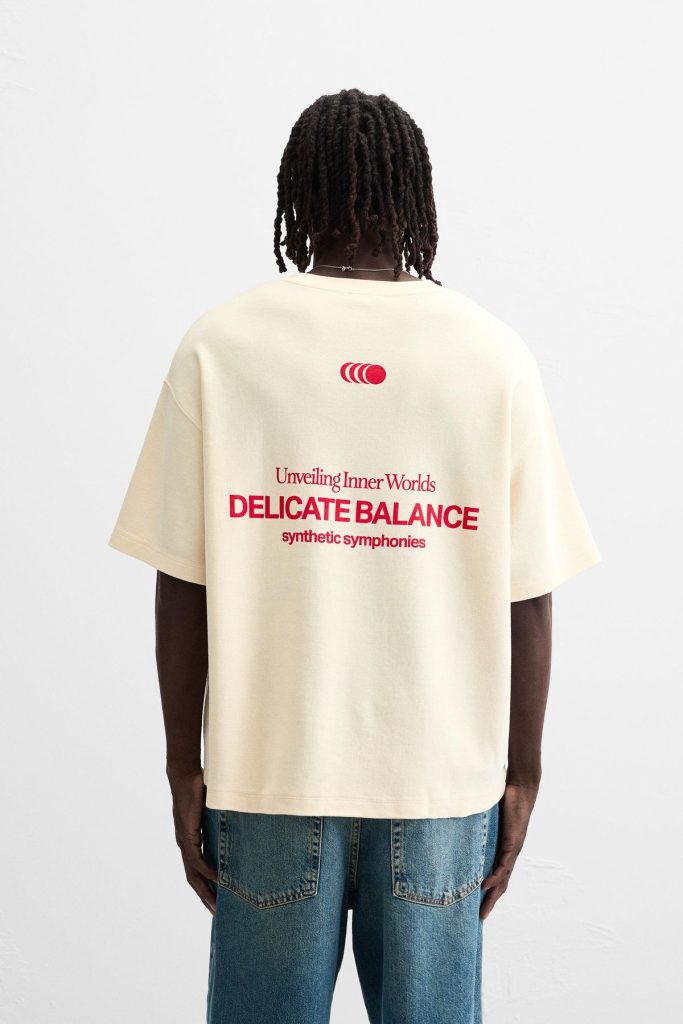Streetwear has become one of the most powerful forces in global fashion. Born out of the rebellious energy of skateboarding, hip-hop, and youth countercultures, it has evolved into a billion-dollar industry that influences luxury houses, sportswear brands, and independent labels alike. At the heart of this movement lies two simple yet iconic garments: the T-shirt and the short.
Together, these pieces embody the ethos of streetwear: comfort, individuality, and cultural authenticity. While high fashion once looked down on these casual essentials, today they stand as the cornerstones of modern style. This article explores how T-shirts and shorts became inseparable from streetwear, their evolution, their cultural power, and their enduring role in shaping everyday fashion.
Roots of Streetwear: The Foundation of Casual Cool
Streetwear originated in the late 1970s and 1980s, primarily in California and New York. Skaters, surfers, and hip-hop communities pioneered a new aesthetic that rejected traditional fashion rules. Instead of suits and polished shoes, baggy tees, oversized shorts, and sneakers became uniforms of authenticity.
For skateboarders, shorts provided practicality — loose enough for movement, durable enough for falls. T-shirts, often printed with bold graphics, logos, or DIY artwork, reflected rebellion and creativity. In hip-hop, oversized T-shirts and basketball shorts symbolized swagger, confidence, and community pride.
This cultural melting pot gave rise to brands like Stüssy, Supreme, and Zoo York, all of which leaned heavily on tees and shorts as their primary products. These garments weren’t just clothes — they were cultural statements.
The Power of the T-Shirt in Streetwear
If streetwear were a kingdom, the T-shirt would be its crown jewel. The reasons are clear:
Accessibility: Anyone can afford and wear a T-shirt, making it democratic and inclusive.
Self-Expression: Graphic tees became the canvas for creativity, activism, and identity.
Exclusivity: Limited edition drops created hype — a plain tee with a logo could resell for hundreds of dollars.
Collaboration Culture: Supreme x Louis Vuitton, Off-White x Nike — collab tees became collectibles as valuable as art pieces.
In streetwear, the T-shirt transcended clothing. It became a passport into a subculture, signaling who you were and what you stood for.
Shorts: The Underrated Streetwear Hero
While T-shirts often steal the spotlight, shorts are equally important in streetwear culture. From basketball courts to skateparks, shorts represent functionality and freedom. They come in diverse styles, each carrying cultural weight:
Basketball Shorts: A staple in 90s hip-hop, worn oversized with bold team logos.
Cargo Shorts: Practical and rebellious, favored by skaters and street rebels.
Denim Shorts (Jorts): Popular in both skate and punk-influenced subcultures.
Techwear Shorts: Modern iterations with multiple pockets, zippers, and futuristic silhouettes.
Shorts embody comfort and a laid-back lifestyle, but they also adapt to trends. Luxury brands like Prada and Dior now offer high-end shorts, proving their versatility beyond casual wear.
The Streetwear Uniform: T-Shirt + Shorts + Sneakers
The simplicity of streetwear lies in its formula. A graphic T-shirt, baggy shorts, and statement sneakers form the quintessential streetwear outfit. It’s functional yet stylish, casual yet cultural.
Sneakers complete the look, often turning a simple outfit into a statement. Jordans, Air Force 1s, or Yeezys paired with shorts and a logo tee signal street credibility. The T-shirt + shorts combo serves as a canvas, while sneakers act as the punctuation mark.
This “uniform” has become universal, from Tokyo to New York to Paris. It’s proof that streetwear has transcended geography to become a global language of style.
Streetwear in High Fashion: From Subculture to Luxury Runway
In the 2000s, luxury fashion began to take notice of streetwear’s influence. Designers like Virgil Abloh (Off-White), Demna Gvasalia (Balenciaga), and Kim Jones (Dior) brought oversized tees, shorts, and sneakers into the luxury space.
What was once dismissed as “casual” became coveted. A $50 graphic tee could inspire a $500 designer version. Baggy basketball shorts appeared on Paris runways. Collaborations between luxury houses and streetwear brands blurred the lines between high and low fashion.
Streetwear forced fashion to evolve. No longer was elegance defined by tailoring alone — comfort and culture now had a place in luxury.
Gender Fluidity and Inclusivity
Another reason T-shirts and shorts dominate streetwear is their genderless appeal. Unlike dresses or suits, these garments aren’t restricted by traditional fashion codes. A baggy tee or pair of shorts can be worn by anyone, regardless of gender identity.
This inclusivity resonates with younger generations who value fluidity and freedom of expression. Streetwear’s rejection of rigid dress codes has helped democratize fashion, proving that style belongs to everyone.
Sustainability and the Future of Streetwear Staples
As streetwear matures, sustainability has become a pressing issue. Fast-fashion imitations flood the market, creating waste and diluting authenticity. Yet, many brands are adapting:
Using organic cotton for T-shirts.
Recycling fabrics for shorts.
Creating limited drops to reduce overproduction.
Encouraging resale culture, where secondhand tees and shorts become coveted vintage treasures.
Streetwear’s future will depend on balancing hype with responsibility. Given the enduring demand for tees and shorts, innovation in sustainable production is essential.
Global Impact: From Local Subculture to Worldwide Movement
What started in skateparks and urban neighborhoods now dominates wardrobes across continents. T-shirts and shorts are the building blocks of streetwear, making them global symbols of casual fashion.
In Asia, oversized tees and techwear shorts dominate Seoul and Tokyo streets. In the U.S., basketball shorts and retro logo tees remain staples. In Europe, minimal graphic tees paired with tailored shorts reflect a blend of street and sophistication.
Streetwear’s influence is so strong that even people outside the culture adopt its staples. Tourists, office workers, and students all embrace T-shirts and shorts as everyday essentials, proving their universal appeal.
Conclusion: Everyday Icons of Streetwear
T-shirts and shorts are more than just garments. They represent culture, identity, and a way of life. From skateboarding roots to luxury fashion runways, they have proven their power as symbols of freedom, comfort, and creativity.
Streetwear’s rise has shown us that fashion doesn’t need to be complex to be impactful. Sometimes, the most powerful statements are made with the simplest pieces. A graphic tee. A pair of shorts. A pair of sneakers. Together, they form a uniform that speaks to generations of style rebels and continues to define casual culture worldwide.



